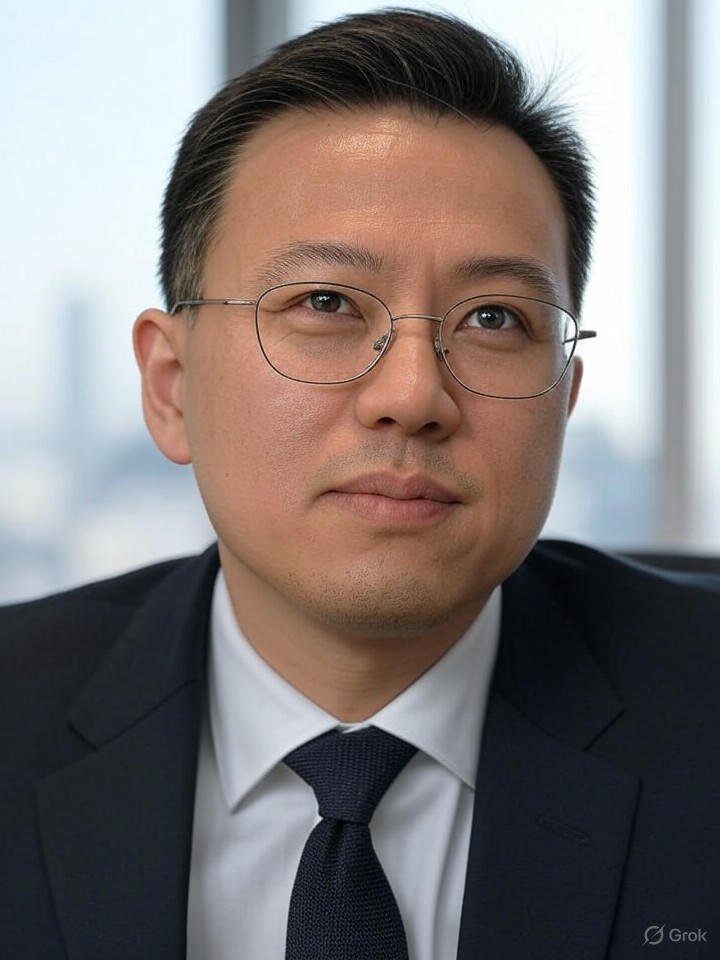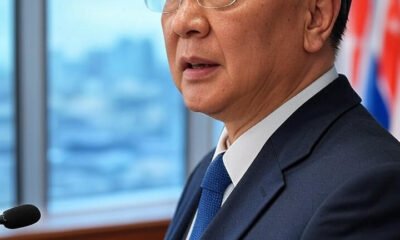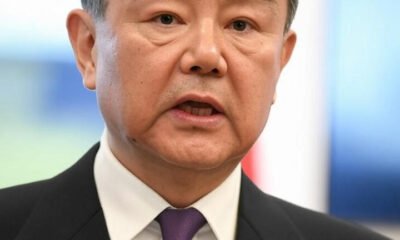Tools & Platforms
Trump’s AI Chip Bans Backfire, Ignite 60% China Tech Index Surge

In the escalating U.S.-China tech rivalry, President Trump’s stringent bans on exporting advanced AI chips have unexpectedly ignited a surge in China’s domestic semiconductor and technology sectors. Despite persistent economic headwinds like a protracted property crisis and ongoing trade tensions, Chinese tech stocks have experienced a remarkable rally throughout 2025. The Hang Seng Tech Index, a key barometer for the sector, has climbed more than 60%, outpacing many global benchmarks and drawing intense scrutiny from investors and analysts alike.
This boom stems directly from Trump’s policies aimed at curbing China’s access to cutting-edge U.S. technology, particularly chips from giants like Nvidia. By restricting exports of high-performance AI accelerators, the administration sought to hinder Beijing’s artificial intelligence ambitions. Instead, these measures have accelerated China’s push for self-reliance, funneling billions into homegrown alternatives and boosting companies such as Semiconductor Manufacturing International Corp. and Huawei Technologies Co.
Policy Repercussions and Market Dynamics
Critics argue that Trump’s approach, while intended to protect American dominance, has backfired by supercharging China’s innovation ecosystem. For instance, domestic chipmakers have ramped up production of alternatives to banned U.S. products, leading to skyrocketing valuations. Shares in firms like Cambricon Technologies, often dubbed China’s Nvidia equivalent, have quintupled in the past year, according to market data cited in reports from Yahoo Finance. This fervor has not only attracted domestic investment but also lured foreign hedge funds betting on Beijing’s resilience.
However, the rapid ascent has sparked warnings of overheating. Analysts at Goldman Sachs and JPMorgan have projected further gains—up to 35% for certain indices by 2026—but caution against bubble risks, echoing sentiments from Business Insider, which highlighted concerns over inflated valuations amid China’s broader economic slowdown. The rally’s intensity recalls past market manias, where policy-driven booms preceded sharp corrections.
Shifting Strategies in U.S.-China Tech Trade
Trump’s administration has shown signs of tactical flexibility, with reports of negotiations allowing limited sales of downgraded Nvidia chips to China. Nvidia CEO Jensen Huang noted in August that discussions with the White House for exporting a less advanced version of its next-gen GPU could take time, as detailed in coverage from Reuters. This comes after an unusual deal where the U.S. government would take a 15% cut of revenues from such sales, a move criticized in The New York Times as a short-term profit grab that risks eroding America’s long-term AI edge.
Senate Democrats have urged Trump to reconsider, warning in an open letter that easing restrictions could empower China’s tech sector further, per CNBC. Meanwhile, sentiment on platforms like X reflects investor frustration and irony, with users noting how bans intended to stifle China have instead propelled its chip industry forward, though such posts underscore speculative hype rather than hard evidence.
Investor Sentiment and Future Risks
The overheating debate has intensified as Chinese tech giants like Alibaba and Tencent ride the wave, with their stocks surging alongside semiconductor plays. Yet, regulatory pressures in China, including mandates for tech firms to prioritize domestic chips over foreign ones like Nvidia’s H20, signal potential volatility. As reported in The Times of India, Beijing is actively discouraging imports, favoring local options to build independence.
For industry insiders, this dynamic presents a double-edged sword: opportunities in undervalued Chinese assets amid the rally, but heightened risks from geopolitical escalations or economic downturns. Trump’s policies have undeniably reshaped global supply chains, forcing companies worldwide to navigate a fragmented tech environment. As 2025 progresses, the sustainability of this boom will hinge on whether China’s domestic innovations can match U.S. prowess without overheating into a bust.
Broader Implications for Global Tech Competition
Looking ahead, the U.S. exemption of certain chipmakers from tariffs—provided they commit to domestic manufacturing—has buoyed stocks like Nvidia’s, as noted in Yahoo Finance. This carrot-and-stick approach aims to repatriate production, but critics in The Washington Post decry it as a historic blunder, potentially handing China the tools to close the AI gap.
Ultimately, the chip ban’s unintended consequences highlight the complexities of tech nationalism. While boosting short-term gains in China’s markets, it underscores the need for balanced strategies that foster innovation without isolating key players. As tensions persist, stakeholders must weigh the allure of rapid growth against the perils of overvaluation in this high-stakes arena.
Tools & Platforms
Global policymakers, executives urge open collaboration to share opportunities of AI-Xinhua
SHENYANG, Sept. 11 (Xinhua) — The 2025 Global Industrial Internet Conference concluded on Monday in Shenyang, the capital of northeast China’s Liaoning Province, having seen Chinese and international guests issue a call for open cooperation to share in the new opportunities presented by artificial intelligence (AI).
The conference brought together government and business representatives from over 10 countries, including Brazil, the United States, the Republic of Korea, Saudi Arabia and China, spanning sectors such as mobile communication, AI and high-end manufacturing. Attendees held in-depth discussions on how to better advance intelligentization, network connectivity and digitalization in economic development.
Piero Scaruffi, founder of Silicon Valley Artificial Intelligence Research Institute, said that AI technology is not a zero-sum game, but rather a catalyst for mutual benefits and shared success. Today’s advancements in AI have benefited greatly from international cooperation.
Tang Lixin, vice president of Northeastern University in Liaoning and an expert on industrial intelligence, told Xinhua that AI has become a strategic technology leading a new technological revolution and industrial transformation. It is a critical strategic resource driving global technology leaps, industrial optimization and upgrading, and overall productivity advancement, exerting profound impacts on economic and social development. Promoting the healthy, orderly development of AI has become particularly urgent, he noted.
“AI presents a shared opportunity for all humanity, as well as a common challenge we all face,” said Hermano Tercius, secretary of telecommunications at the Ministry of Communications of Brazil, adding that in the current complex and ever-changing international environment, strengthening international cooperation in the field of new technologies is crucial.
He said that as the world’s third-largest user of AI, Brazil still lags behind in data center construction. This necessitates collaboration with countries that have advantages in digital infrastructure to achieve complementary benefits and mutual success.
The further advancement of global AI technology hinges on the existence of an open, inclusive environment for innovative collaboration. During the conference, many participants highlighted challenges in areas such as governance frameworks and technical standards that current global AI development faces.
“AI has triggered significant transformations in the technological landscape. Without better compliance-driven rulemaking, it is difficult to predict its future trajectory. Global cooperation is essential to address these challenges,” said Alexandre V. Chidiac, managing partner of Iskandar Group, which is a company engaged in international shipping and trade.
“We advocate for inclusive policies and environments in the field of AI among all nations,” Tercius said. “Only through such efforts can we ensure that no country is left behind in this technological revolution, and build a robust bridge towards shared prosperity and an interconnected future for the world.”
Ben Sassi, general manager of the Warsaw Chamber of Commerce in Poland, stated that there is an urgent global need to strengthen dialogue, enhance mutual trust, and build widespread consensus in areas such as rule-making, technical standards and ethics to promote the healthy development of AI in a united manner.
Over the years, China has made positive explorations and contributed constructive ideas and solutions to the global governance of AI. The country launched the Global AI Governance Initiative in 2023. And last year, the 78th UN General Assembly reached a historic consensus by adopting a resolution on enhancing international cooperation for AI capacity building, which was spearheaded by China.
Participating guests also expressed their willingness to collaborate with China in the field of AI in the future. Pakistan Global Business Alliance Chairman Muhammad Asif Noor Farooqi, for example, said that he hopes China and Pakistan will enhance cooperation within the digital economy to strengthen Pakistan’s intelligent infrastructure. ■
Tools & Platforms
The Latest Tech News – SimCorp, Axyon AI

The latest technology news in the wealth management sector from around the world.
SimCorp, Axyon AI
SimCorp, the global
financial technology provider and subsidiary of Deutsche Börse
Group, is partnering with Axyon AI, a fintech firm specialising
in predictive, AI-driven solutions for asset managers, hedge
funds and institutional investors.
Axyon AI’s predictive analytics will integrate into the SimCorp
One investment management platform later this year.
Equity managers and analysts will gain access to predictive
alerts, helping them anticipate market shifts, identify emerging
opportunities, and assess potential risks, SimCorp said in a
statement.
“By integrating Axyon AI’s solutions into the SimCorp One
platform, portfolio managers benefit from seamless access to
asset forecasts, rankings and signals directly within their
existing workflows,” Marc Schröter, chief product and technology
officer at SimCorp, said.
As part of the deal, Axyon AI wil join SimCorp’s open
platform ecosystem, which will give SimCorp One users access
to third-party tools across the investment management value
chain.
SimCorp referred to industry research showing that there is
rising demand for AI in asset management. The 2025 Global
InvestOps Report found that 75 per cent of buy-side executives
recognise AI’s potential benefits but require more guidance on
how to embed it effectively.
Tools & Platforms
How AI Will Unlock Small Business Growth

Artificial Intelligence
getty
If AI is going to matter at all in our economy, it has to matter for small businesses first.
As a search fund entrepreneur, I’ve met and worked with more than 300 CEOs and founders in cities across the U.S. from New York to Las Vegas, Sunnyvale to Maryland. In every conversation, the same concern surfaces: the AI models in our smartphones are more advanced than the technology stacks running our businesses. While the devices in our pockets update monthly, most business systems remain unchanged for years. And nowhere is this more evident than in small businesses.
This matters because small businesses employ more than 61 million people, nearly half the private workforce. Yet just a fraction of 1% are building the kinds of technology ventures that attract institutional capital.
So this means that the overwhelming majority of small businesses are self-funded and family-run. They’re bootstrapped by owners who pour their own savings into businesses that anchor the communities they care about. These are the businesses still running payroll on technology built a decade ago.
Family Businesses Meet AI Startups
Trusted relationships build businesses.
getty
The other day, I joined a lunch meeting with 80 small business owners who lead multi-generational family firms. This gathering was a masterclass in human networks. However, not once was technology mentioned in the entire meeting.
Every three weeks, all 80 members gather at a private club on Park Avenue for a three-course meal. The purpose was to share business priorities and make referrals and introductions for each member. There were green pens and notepads on the tables embossed with the motto: “Trusted relationships build businesses.” Over lunch, if each of the 80 members received just five new customer introductions, that’s over 400 new channels opened before dessert.
Four hours later, I was downtown at the city’s newest restaurant for a startup forum. Here, every conversation was about AI and technology, from AI-powered roll-ups and cybersecurity to founders turning New York’s vacant warehouses into sushi pop-ups.
Startup Forum in NYC Restaurant
New York, NY
Two Worlds In One City
Across every city I’ve traveled to, these two business communities live side by side but rarely meet. One is led by families built through trusted introductions and intellectual property developed over decades. The other is driven by startups fueled by the race to deploy the newest technology at scale.
What happens when these two worlds connect? Imagine today’s most advanced technology powering small family-owned businesses.
For the past 40 years, one model of entrepreneurship has created more than $10 billion in value by doing exactly this: investing in established small businesses and building them with new technology and leadership. The Search fund model, first launched at Stanford in 1984, was designed to bring innovation into established firms. One of the earliest search funds invested in a 50-person roadside assistance company and built it into Asurion, now a global tech-care enterprise with 23,000 employees and 300 million customers. Another transformed a compliance services firm into RIA-in-a-Box, a leading SaaS platform used by over 2,600 firms nationwide.
What once took years and significant capital investment can now be done in months. Today, enterprise-grade tools once reserved for Fortune 500 corporations are within reach of nearly every business. The playbooks that small businesses have relied on for decades to build multi-generational, value-based businesses can, when paired with AI, scale impact in weeks instead of years.
Across core functions, generative AI is cutting work times by more than 60%. If you can sketch an idea on a napkin, it can be built in hours, not weeks. Supply chains, compliance, document processing and technical workflows are already showing double-digit productivity improvements. In some cases, technical tasks have been reduced by as much as 70%.
Search funds are one proven path to bringing technology into legacy businesses. Others are emerging as well, including AI consulting firms, AI studios and AI-powered roll-up strategies, each with their own strategies to rebuild established firms with the most advanced technology available today.
The tools are here, the cost has never been lower, and the door is wide open—for now.
If AI is going to matter at all, it has to matter for small businesses first. Once it’s put to work, it will power growth across Main Street and fuel an economy that directly supports half the workforce.
-

 Business2 weeks ago
Business2 weeks agoThe Guardian view on Trump and the Fed: independence is no substitute for accountability | Editorial
-
Tools & Platforms4 weeks ago
Building Trust in Military AI Starts with Opening the Black Box – War on the Rocks
-

 Ethics & Policy2 months ago
Ethics & Policy2 months agoSDAIA Supports Saudi Arabia’s Leadership in Shaping Global AI Ethics, Policy, and Research – وكالة الأنباء السعودية
-

 Events & Conferences4 months ago
Events & Conferences4 months agoJourney to 1000 models: Scaling Instagram’s recommendation system
-

 Jobs & Careers2 months ago
Jobs & Careers2 months agoMumbai-based Perplexity Alternative Has 60k+ Users Without Funding
-

 Podcasts & Talks2 months ago
Podcasts & Talks2 months agoHappy 4th of July! 🎆 Made with Veo 3 in Gemini
-

 Education2 months ago
Education2 months agoVEX Robotics launches AI-powered classroom robotics system
-

 Education2 months ago
Education2 months agoMacron says UK and France have duty to tackle illegal migration ‘with humanity, solidarity and firmness’ – UK politics live | Politics
-

 Funding & Business2 months ago
Funding & Business2 months agoKayak and Expedia race to build AI travel agents that turn social posts into itineraries
-

 Podcasts & Talks2 months ago
Podcasts & Talks2 months agoOpenAI 🤝 @teamganassi





